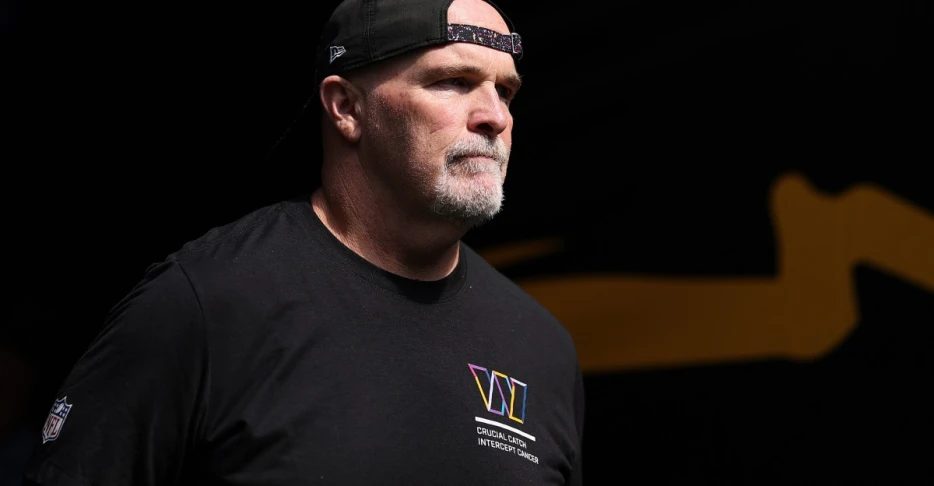
 Hogs Haven
Hogs Haven
Washington built their 2025 defense around size, veteran leadership, and trench investment.
They threw money at the interior, added seasoned names to fortify the spine, and doubled down on physicality as an identity. On paper, the front seven was supposed to be immovable.
But football isn’t played on paper — and once again, on Monday Night Football, against a Chicago Bears offense that’s sputtered through their first four games, Washington got gashed in the simplest, most predictable area of the sport: stopping the run.
It has become a weekly indictment of Joe Whitt’s unit. And it’s no longer a schematic issue alone. It is philosophical. Cultural. It’s now expected.
The Bears walked into Northwest Stadium without hiding their intentions. It was inside zone. Power. Counter. Duo QB keepers to the perimeter (see Caleb Williams TD run). Rinse, repeat. And time after time, Washington failed to seal the C and D gaps, lost force contain from its edge players and defensive backs, and let one of the NFL’s least efficient run games bludgeon them under a national spotlight.
Jayden Daniels led a heck of a comeback after being down 13-0, slicing his way through Chicago’s defense on his way to a trio of TD passes. But when the aerial attack wasn’t working as Williams attempted to lead his group back, the entire stadium then knew what was coming — and the Commanders looked powerless to stop it.
This isn’t new. It’s not isolated. It’s a chronic defect that’s been around for years.
Peeling the layers back, there are three core reasons it continues to manifest:
Washington doubled and tripled down on interior fortification this offseason. Javon Kinlaw was signed to be a pocket-collapser with knockback strength. Eddie Goldman was brought out of semi-retirement (out of football in 2022-2023) to add rotational power. And 2024 Day 2 pick Johnny Newton is already one of the most naturally explosive defensive tackles on the roster.
The problem? It doesn’t matter how sturdy your A and B gaps are if teams can simply run around you and seal you away from the play.
Washington’s edges — both from defensive ends and overhang defenders — continue to be soft. Teams don’t even need to win with speed. They just widen the front and win with leverage and patience.
Even more, teams often deploy two tight end sets (12 personnel) or work into a jumbo package, or go unbalanced up front to change the math from a blocking surface area perspective to win on the ground. Last night, while the Bears tout one of the NFL’s most intriguing young TE duos in 2025 first-rounder Colston Loveland (Michigan) and Cole Kmet, who they’ve asked to block in-line, Chicago ran through the face of Washington primarily in 11 personnel (1 TE).
In the ground game, setting an edge is more than being strong. It’s discipline. It’s playing long while keeping your chest clean. It’s squeezing pullers...